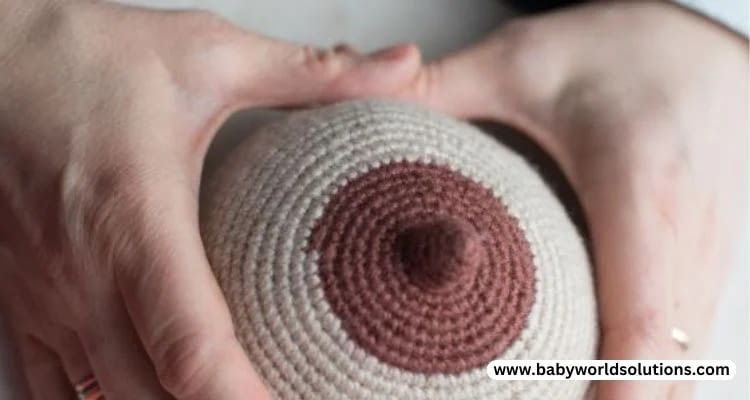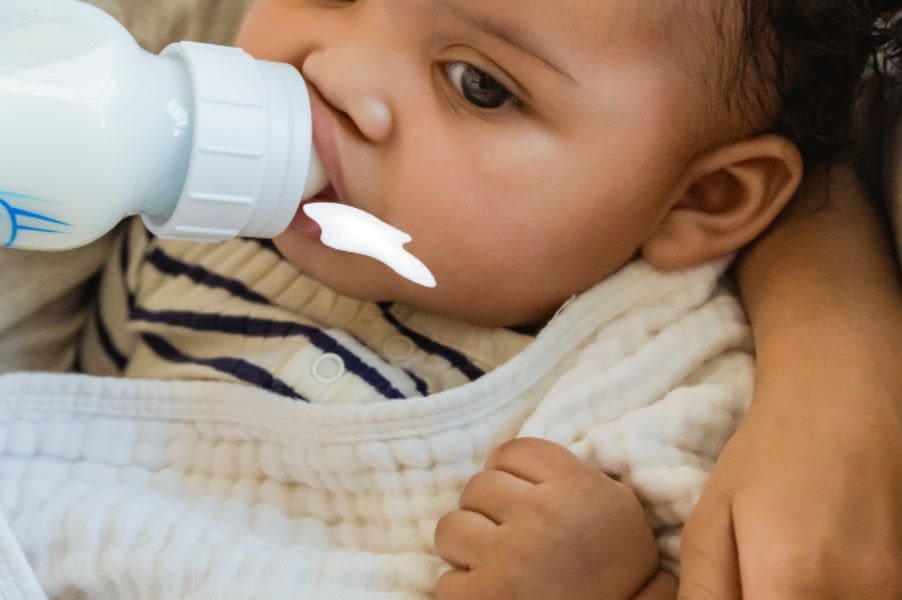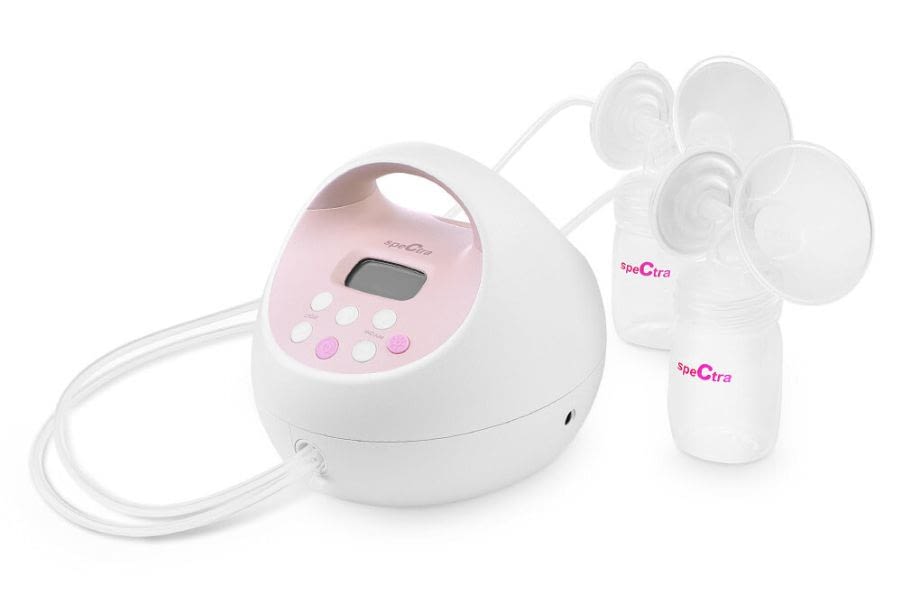When it comes to breastfeeding and pumpin, mothers often face a myriad of concerns, from latching issues to milk supply worries. But one unexpected issue that can cause distress is the discovery of purple or bluish discoloration of the nipples after pumping. This color change might be alarming, leading many to questions, as in my case, I wonder why are my nipples purple after pumping and the safety and effectiveness of their pumping practices.
In this comprehensive article, I’ll delve into why this nipple discoloration can occur, share real-world experiences from mothers who’ve faced this concern, offer insights from medical professionals, and provide recommendations for breast pump equipment and accessories that may help prevent such issues. Furthermore, I will explore preventative measures to ensure comfortable and safe pumping sessions.
Understanding Nipple Discoloration: Why are my nipples purple after pumping?
One common concern that many new mothers have is observing a purple hue on their nipples after breastfeeding. While initially alarming, this occurrence is not necessarily a cause for immediate concern. Purple or bluish nipples after breastfeeding are usually a result of engorgement or a poorly fitting breast pump.
When the breast is overly full of milk (engorged), pressure builds, leading to vascular congestion and discoloration. Similarly, a breast pump flange that is too tight or incorrectly positioned can cause blood to pool in the nipple area, leading to this change in color.
While this can be uncomfortable, it is typically temporary and resolves with proper breastfeeding or pumping techniques. However, suppose discoloration persists or is accompanied by other symptoms such as severe pain, cracking, or bleeding. In that case, it is advisable to consult a healthcare professional to rule out potential complications like mastitis.
This discoloration isn’t exclusive to breastfeeding mothers; even those not nursing can find their nipples turning a worrying shade of purple.
So, why are my nipples purple not breastfeeding? For some, the concern is more specific: “Why are my nipples purple, even though I’m not breastfeeding?”. This can be due to hormonal changes in the body, such as during menstruation, pregnancy, or menopause.
Real Stories from Mothers on Nipple Discoloration
- Emma’s Story: Emma recalls the alarm she felt on seeing her nipples turn a shade of purple after a pumping session. Her immediate concern for her well-being led her to consult a lactation expert, who reassured her that while the discoloration was unusual, it could be addressed by adjusting her pumping routine.
- Sophia’s Experience: Sophia faced discomfort and discoloration due to improper pumping techniques. Only when she learned the importance of correct pump use and adjusted her methods could she alleviate the problem and resume comfortable pumping.
- Olivia’s Insight: Prolonged sessions at the breast pump resulted in nipple discoloration for Olivia. By decreasing the duration of each pumping session, she found that not only did her nipple color return to normal but also her overall pumping experience improved.
These stories highlight a common thread: awareness and corrective action can often resolve issues that arise during pumping, including discoloration.
Medical insights into nipple discoloration
Medical professionals highlight that while some degree of discoloration can occur due to increased blood flow during breastfeeding or pumping, a change to purple or blue hues can indicate something wrong with your pumping technique or equipment. Pay attention to these signs, as they might be telling you something about your breast health and pumping practices.

3 Main factors: why are my nipples turning purplish?
According to healthcare experts, several factors can contribute to nipple discoloration from pumping, including but not limited to:
- Improper suction or pump fit: Excessive suction or using flanges that don’t fit well can cause overstimulation or even minor trauma to the delicate tissues, leading to discoloration.
- Extended pumping sessions: Prolonged and continuous suction may lead to increased blood concentration in the area, resulting in a purplish hue.
- Inadequate pumping breaks: Just as with any physical activity, your body needs time to recover between sessions.
Sometimes, you can also experience purple tits when showering and wonder why do my nipples turn purple in the shower? To address this worry, it’s essential to understand that the nipples are composed of sensitive, reactive tissue that can change color due to various factors. A common reason is temperature fluctuations, such as a hot shower or exposure to cold weather, leading to temporary changes in the color of your nipples.
Equipment recommendations to prevent discoloration of the nipple:
Equipping yourself with the right tools can significantly impact your pumping journey. Here are some breast pumps and accessories specifically designed to make the experience more comfortable and practical, potentially preventing issues like nipple discoloration:
- Medela Pump in Style Advanced Breast Pump: Known for its reliability and customizable settings, this pump enables mothers to adjust the suction and speed to their comfort levels, reducing the risk of overstimulation.
- Spectra S2 Plus Electric Breast Pump: The Spectra S2 offers a gentle and naturalistic suction pattern and features a variety of settings to suit individual preferences, mitigating the potential for excessive suction.
- Lansinoh Signature Pro Double Electric Breast Pump: This efficient pump provides different pumping modes and numerous suction levels, allowing for a tailored pumping experience that can help avoid overexertion.
- Pumpin’ Pal Breast Pump Flanges: For those who find that standard flanges do not provide a proper fit, these flanges come in multiple sizes and angles, offering a customized fit that mimics natural nursing positions, potentially preventing discoloration due to poor fit.
Preventative measures to avoid purple nipples
Prevention is always better than cure. Here are some steps you can take to avoid nipple discoloration from pumping:
- Ensure Proper Fit: Not all nipples are the same size, and using flanges that are too large or too small can lead to issues. Make sure the flanges you use match the size of your nipples and that your areola is not pulled excessively into the flange tunnel during pumping.
- Check Suction Levels: Start at the lowest suction level and increase as needed for comfort and adequate milk flow. High suction levels are often not necessary and could contribute to discoloration.
- Pump Duration: Limit your pumping sessions to 15-20 minutes per breast. Prolonged pumping can cause overstimulation and lead to discoloration.
- Take Breaks: Your body needs time to recover between pumping sessions, so don’t hesitate to take short breaks, especially if you’re experiencing discomfort.
- Observation and Adjustment: Watch for any changes in your nipple color and adjust your pumping practices accordingly. If you notice discoloration, evaluate and modify your technique as necessary.
- Stay Hydrated and Nourished: Proper hydration and nutrition can help your skin and body recover from and adapt to pumping demands. A well-nourished body is more resilient.
Armed with these insights and recommendations, you are better equipped to address any pumping-related concerns like nipple discoloration. Always listen to your body and seek professional assistance if you have doubts about your health or breastfeeding practices.
As a mother dedicated to providing the best for your infant, taking care of yourself is essential. Making sure your pumping experience is as gentle and effective as possible will benefit your physical well-being and ensure a happier, more satisfying journey through motherhood. Remember, you are not alone in this experience; support is readily available as you navigate this essential aspect of nurturing your baby.

6 Tips: How to get pink nipples?
While it’s essential to remember that nipple color varies significantly from person to person, it’s perfectly natural to have darker or lighter nipples; if you’re aiming for healthier, pinker nipples, here are a few tips you might consider:
- Hydration: It’s important to stay hydrated, not just for your overall health but for your skin’s health as well. Dehydration can cause your skin, including your nipples, to dry out and darken.
- Moisturizing: Regularly moisturizing your nipples can help keep them healthy and possibly help them retain their natural color. Opt for an honest, unscented moisturizer to avoid irritation.
- Exfoliation: Gently exfoliating your nipples once a week can remove dry and dead skin cells, promoting fresher, lighter skin cells to the surface. Do this carefully to avoid causing any harm.
- Healthy Diet: Consuming a well-balanced diet rich in fruits, vegetables, and lean proteins can help promote healthy skin and maintain the natural color of your nipples.
- Protect from the Sun: Excessive sun exposure can lead to the darkening of the nipples. Whenever possible, keep this area protected from the sun.
- Avoid harsh chemicals: Certain soap, laundry detergents, and lotions can have harsh chemicals that cause skin discoloration. Opt for natural, gentle skin products instead.
Purple Nipples During Early Pregnancy: A Common Phenomenon
Many expecting mothers notice changes in their nipples, including color transformations, particularly into a purple or darker hue. This is quite a common phenomenon in early pregnancy, primarily due to hormonal changes. The body begins to prepare for breastfeeding; this involves increased blood flow and changes in the breast and nipple tissues, often leading to a darker or purplish appearance.
However, these changes can vary from person to person and are not necessarily a surefire sign of pregnancy. Some women may not experience any color changes throughout their pregnancy.
If you notice any other unusual symptoms or if your nipple color does not return to normal post-pregnancy, it’s always a good idea to consult with a healthcare provider. Remember, every woman’s pregnancy journey is unique, and listening to what your body tells you is essential. Your health and comfort are paramount during this transformative time.
1 Visit today





